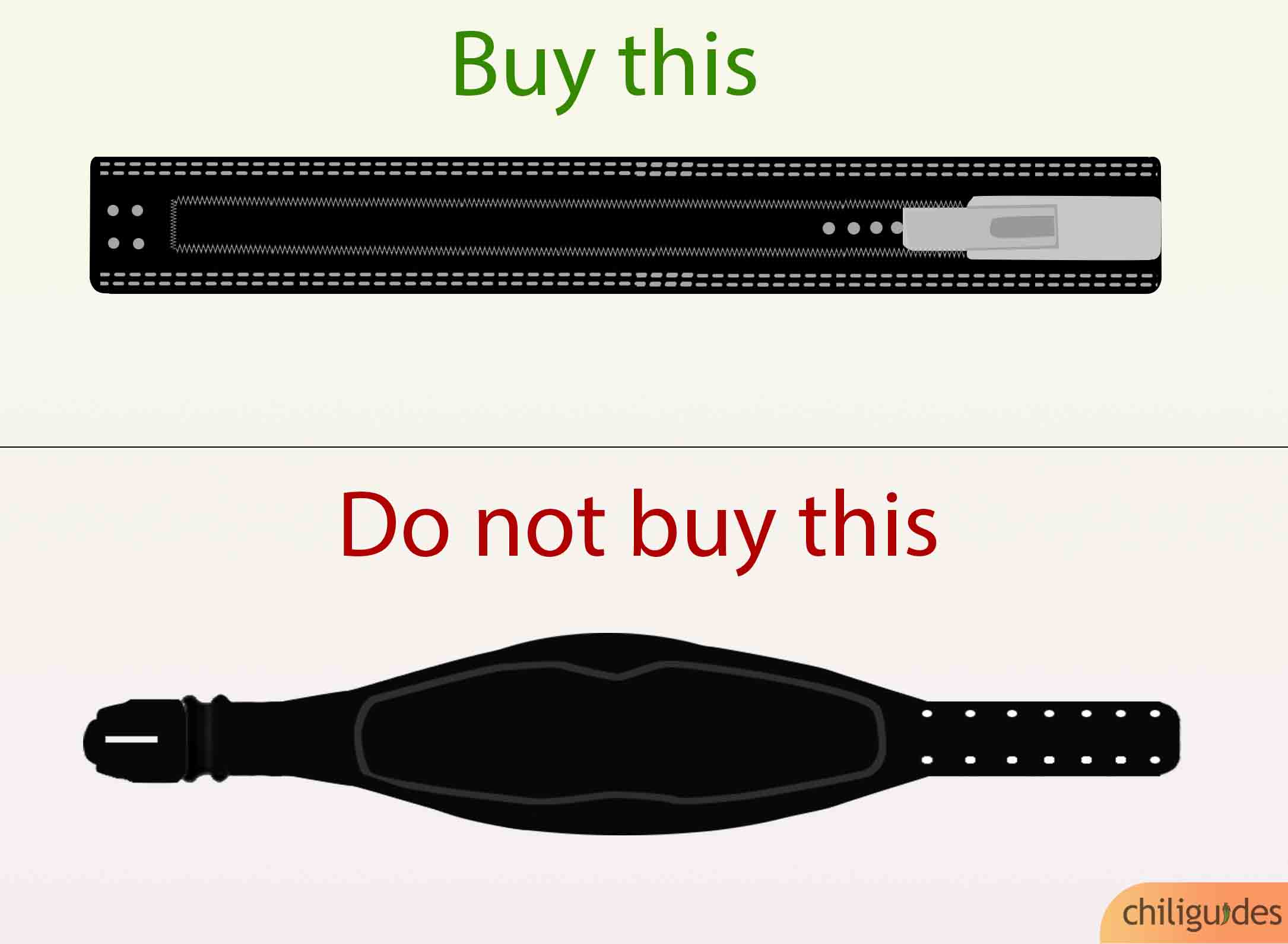
Choose a weightlifting belt based on material, thickness, and fit. Ensure it offers proper support and comfort.
Weightlifting belts are essential for providing core stability and reducing the risk of injury during heavy lifts. They come in various materials such as leather and nylon, each offering different levels of support and flexibility. The thickness of the belt also plays a crucial role in how much support it provides, with thicker belts generally offering more rigidity.
Proper fit is critical to ensure the belt stays in place and provides the necessary support without causing discomfort. By considering these factors, you can select a weightlifting belt that enhances your performance and ensures safety during your workouts.

Credit: www.dmoose.com
Introduction To Weightlifting Belts
Weightlifting belts are essential for many lifters. They provide extra support and stability. Choosing the right belt is crucial for safety and performance.
Purpose Of Weightlifting Belts
The primary purpose of a weightlifting belt is to support the lower back. It helps maintain proper posture during lifts. This reduces the risk of injury.
Belts also increase intra-abdominal pressure. This pressure supports the spine during heavy lifts. Weightlifters can lift more weight safely.
Benefits Of Using A Belt
Using a weightlifting belt has many benefits. Here are some key advantages:
- Improved Stability: Belts provide better stability for heavy lifts.
- Enhanced Performance: Lifters can lift more weight with a belt.
- Reduced Injury Risk: Belts help prevent lower back injuries.
- Better Form: A belt encourages proper lifting form.
| Benefit | Description |
|---|---|
| Improved Stability | Belts provide better stability during heavy lifts. |
| Enhanced Performance | Lifters can lift more weight with a belt. |
| Reduced Injury Risk | Belts help prevent lower back injuries. |
| Better Form | A belt encourages proper lifting form. |

Credit: chiliguides.com
Types Of Weightlifting Belts
Choosing the right weightlifting belt can improve your performance and safety. Different types of belts serve various purposes. Understanding these types helps you select the best one for your needs.
Powerlifting Belts
Powerlifting belts are designed for heavy lifting. They provide maximum support to your back and core.
- Material: Usually made of thick leather.
- Width: Uniform width, typically 4 inches.
- Buckle: Single or double prong buckle for secure fit.
Powerlifting belts are stiff and durable. They help you lift heavier weights safely.
Olympic Weightlifting Belts
Olympic weightlifting belts are made for dynamic movements. These belts are more flexible than powerlifting belts.
- Material: Often made of leather or synthetic materials.
- Width: Tapered design, wider at the back.
- Buckle: Quick-release buckle for easy adjustments.
Olympic weightlifting belts allow more freedom of movement. They are ideal for snatches and clean-and-jerks.
Material Considerations
Choosing the right weightlifting belt is crucial. Material plays a significant role in this decision. Let’s explore the different materials available for weightlifting belts.
Leather Belts
Leather belts are a popular choice among weightlifters. They offer excellent support and durability. These belts are typically made from cowhide or suede. The thickness of leather belts varies, but most range from 10mm to 13mm.
Here are some key benefits of leather belts:
- Durability: Leather belts can last for years if maintained well.
- Support: They provide firm support for heavy lifts.
- Comfort: Over time, leather belts mold to your body shape.
Leather belts are best for those lifting heavy weights regularly. They provide unmatched stability and support.
Nylon Belts
Nylon belts are lighter and more flexible than leather belts. They are often preferred by beginners and casual lifters. These belts are usually around 4 inches wide and offer good support.
Consider the following benefits of nylon belts:
- Flexibility: Nylon belts are easier to adjust and wear.
- Weight: They are much lighter than leather belts.
- Cost: Nylon belts are generally more affordable.
Nylon belts are ideal for those who need moderate support. They are suitable for various exercises beyond heavy lifting.
| Feature | Leather Belts | Nylon Belts |
|---|---|---|
| Durability | High | Moderate |
| Support | Firm | Moderate |
| Flexibility | Low | High |
| Weight | Heavy | Light |
| Cost | High | Low |
Belt Thickness And Width
Choosing the right weightlifting belt can make a big difference. Two key factors are belt thickness and width. These affect support and comfort during lifts.
Choosing The Right Thickness
Belt thickness ranges from 6 mm to 13 mm. Thicker belts offer more support. They are good for heavy lifting. Thinner belts are more flexible. They suit beginners and lighter lifts.
Here is a quick overview:
| Thickness | Support Level | Best For |
|---|---|---|
| 6 mm | Light | Beginners |
| 10 mm | Moderate | Intermediate Lifters |
| 13 mm | High | Advanced Lifters |
Width Variations
Weightlifting belts come in different widths. Common widths are 4 inches and 6 inches. Wider belts provide more back support. Narrower belts allow for better mobility.
Consider these points:
- 4-inch belts: Good for deadlifts and general lifting.
- 6-inch belts: Ideal for squats and heavy lifts.
Each width has its own benefits. Choose based on your lifting needs and comfort.
Belt Buckle Types
Choosing the right weightlifting belt involves understanding different buckle types. Each type offers unique features and benefits. Let’s explore the two main buckle types: prong buckles and lever buckles.
Prong Buckles
Prong buckles are the most common type of belt buckles. They come in single-prong and double-prong versions. A single-prong buckle has one pin, while a double-prong buckle has two.
| Type | Advantages | Disadvantages |
|---|---|---|
| Single-Prong |
|
|
| Double-Prong |
|
|
Lever Buckles
Lever buckles are another popular choice among weightlifters. These buckles use a lever mechanism to secure the belt. They offer several benefits over prong buckles.
- Easy to Use: Lever buckles are simple to operate. They require less effort to fasten.
- Quick Adjustment: You can adjust the tightness quickly with a lever buckle. This is useful during intense workouts.
- High Security: Lever buckles provide a secure fit. They are less likely to slip under heavy loads.
Lever buckles are ideal for lifters who need quick adjustments and high security. They are especially useful for powerlifting and intense training sessions.
Sizing And Fit
Choosing the right weightlifting belt involves understanding the sizing and fit. A belt that fits well can enhance performance and prevent injuries. Let’s delve into how to measure your waist and adjust the belt for comfort.
Measuring Your Waist
Accurate waist measurement is crucial for a proper belt fit. Use a flexible tape measure.
- Wrap the tape measure around your waist, above the belly button.
- Ensure the tape is snug but not too tight.
- Take note of the measurement in inches or centimeters.
Refer to the manufacturer’s sizing chart. Each brand may have different sizing guidelines.
Adjusting For Comfort
A well-fitted belt should offer both support and comfort. Follow these steps:
- Place the belt around your waist.
- Tighten the belt until it feels secure but not restrictive.
- Ensure you can still take deep breaths.
Test the belt during lifts. Adjust as needed for optimal comfort and support.
| Measurement (inches) | Size |
|---|---|
| 24-28 | Small |
| 28-32 | Medium |
| 32-36 | Large |
| 36-40 | X-Large |
When To Use A Weightlifting Belt
Choosing the right time to use a weightlifting belt can enhance your training. Understanding the correct moments can prevent injuries and improve performance. Let’s break down the key scenarios when a weightlifting belt is most beneficial.
Heavy Lifts
A weightlifting belt is crucial for heavy lifts. This includes exercises like squats and deadlifts. Using a belt during these lifts offers added support to your core. It helps maintain proper form and reduces the risk of back injuries.
| Exercise | Weight Range |
|---|---|
| Squats | Above 80% of max lift |
| Deadlifts | Above 80% of max lift |
Training Phases
During specific training phases, using a weightlifting belt can be very helpful. For example, during a strength-building phase. This is when you are lifting heavier weights.
- Strength-building phase
- Max effort lifts
- Competition prep
In these phases, your goal is to lift heavier and increase strength. A belt provides the necessary support. It ensures you stay safe while pushing your limits.
Expert Tips And Recommendations
Choosing the right weightlifting belt can boost your performance. Experts have shared their tips to help you make the best choice. Here are some key recommendations to consider.
Common Mistakes To Avoid
Avoid these common mistakes when selecting a weightlifting belt:
- Choosing the wrong size: A belt that is too tight or too loose can hinder your performance.
- Ignoring material quality: Low-quality materials can wear out quickly and offer poor support.
- Overlooking belt width: Different exercises may require different belt widths for optimal support.
- Skipping trial: Always try the belt on before purchasing to ensure comfort and fit.
Maintenance And Care
Proper maintenance extends the life of your weightlifting belt. Follow these tips:
- Clean regularly: Wipe down the belt after each use with a damp cloth.
- Store properly: Keep the belt in a cool, dry place to prevent damage.
- Avoid excessive moisture: Do not soak the belt in water; it can weaken the material.
- Inspect for wear: Regularly check for signs of wear and tear to ensure safety.
| Aspect | Recommendation |
|---|---|
| Material | Choose leather for durability; nylon for flexibility. |
| Width | 4 inches is standard; wider belts for heavier lifts. |
| Buckle Type | Single prong is easy; double prong offers more security. |

Credit: www.bodybuilding.com
Frequently Asked Questions
What Is The Purpose Of A Weightlifting Belt?
A weightlifting belt provides support to your lower back and abdomen. It helps stabilize your core during heavy lifts. This can improve performance and reduce the risk of injury.
How To Choose The Right Size Weightlifting Belt?
Measure your waist at the navel to find the correct size. Check the manufacturer’s sizing chart for accuracy. Ensure the belt fits snugly but comfortably.
What Material Is Best For Weightlifting Belts?
Leather is durable and provides excellent support for heavy lifting. Nylon belts are more flexible and comfortable. Choose based on your lifting needs and comfort preference.
When Should I Wear A Weightlifting Belt?
Wear a belt during heavy compound lifts like squats and deadlifts. It’s particularly useful when lifting near your maximum capacity. Avoid using it for lighter, accessory exercises.
Conclusion
Choosing the right weightlifting belt is crucial for your safety and performance. Consider material, fit, and buckle type. Always test the belt during workouts to ensure comfort. Investing in a quality belt can enhance your lifting experience and protect your back.
Make an informed choice and lift with confidence.

